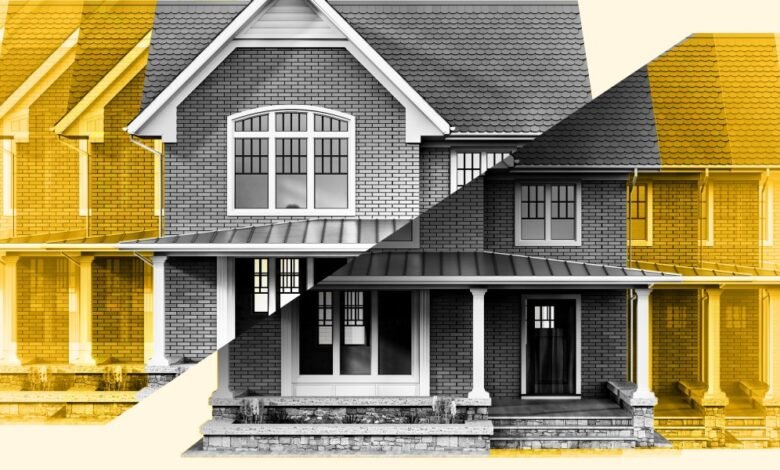

To paraphrase Julie Andrews and the Muppets: The springtime cometh for the housing market. This is traditionally the time when home sales bloom. But 2023’s deep freeze begs the question of whether the warming will emerge from under an ice cube or an iceberg. This season, the economists say, will be no picnic.
Take the typical home value of $349,216, which is more than 40% higher than before the pandemic. Home prices increased on a monthly basis in 45 of the 50 largest metropolitan areas in February, and they’re up in 47 of the 50 largest metropolitan areas on an annual basis, per Zillow. (By Redfin’s count, prices increased in all 50 of the most populous metropolitan areas, which is the first time that’s occurred since the summer of 2022.)
The typical mortgage payment more than doubled during the pandemic, rising by roughly 106%, and is still up 9% from last year, according to Zillow. Mortgage rates have fallen from their recent peak at slightly above 8%, but they’re still high compared to previous historic lows. While the average 30-year fixed mortgage rate is sitting at 7.02%, as of the latest reading, the expectation is that they’ll come down further if the Federal Reserve cuts interest rates this year.
So it’s not an easy market by any means, as Wells Fargo’s economics team recently concluded: “the housing market continues to navigate tumultuous waters.” But more inventory is coming on the market, with the easing of the so-called lock-in effect, which refers to homeowners holding onto their homes for fear of losing their low mortgage rates. The lock-in effect was a major factor last year in pushing existing home sales to their lowest point in almost 30 years.
“A substantial infusion of new inventory to the market is welcome news for buyers on the hunt for their next home this spring—and more evidence that the effects of ‘rate lock’ are starting to weaken,” Zillow’s chief economist wrote recently in a market report.
New listings of existing homes on Zillow are up 21% in February compared to last year and 20% from the prior month; on a local level, more sellers are coming back to the market in Dallas, Minneapolis, Austin, where new listings are the highest. And according to Redfin, new listings are up 13%, which is the biggest annual increase in almost three years. The total number of homes for sale is up 3%, and that’s the biggest increase in nine months, Redfin’s data journalist, Dana Anderson recently wrote in a market update. (Zillow’s analysis shows there are 12% more total active listings than last year.)
So maybe this year’s crucial spring selling season is shaping up more like a shopping window, if not a mini-spring season.
Pending sales are down 6% from the prior year, according to Redfin, which means high housing costs are continuing to price out some would-be homebuyers. There’s also competition even as the market has cooled down, particularly among “attractively-priced and well-marketed homes,” as Zillow put it. That doesn’t seem like it’ll ever completely change given the housing market is missing anywhere between two million and seven million homes, despite an increase in listings.
So what’ll happen to existing home sales this year? They rose 3.1% in January from the previous month, but declined 1.7% from a year earlier. Better economic conditions, and a more stabilized housing market, might not solve all.
“Although lower financing costs, rising supply and brightening economic growth prospects may help home sales turn around from the sharp contraction experienced over the past two years, the recovery will likely be limited by adverse affordability conditions stemming from home price appreciation far outpacing income growth over the past several years,” Wells Fargo senior economist Charlie Dougherty and economic analyst Patrick Barley wrote in a newly shared note titled: “Housing Market 2024: An Early Spring or Longer Winter.”
We know lower mortgage rates will not only somewhat improve affordability, and therefore help bring back demand, but also bring more sellers onto the market and increase supply. It’s why Dougherty and Barley said existing home sales started off on a “positive note,” and expect them to improve modestly this year.
But it really comes down to the fact that “home price appreciation has far outpaced household income growth in recent years,” as the Wells Fargo economics team put it. “Home values are now roughly five times higher than median household incomes, a stark change from the 3.5 ratio averaged historically,” they wrote.
Not to mention, the Wells Fargo team expects home prices to increase another 3.1% in 2024 and 4.3% the year after. “If these forecasts come to fruition, then affordability is not likely to meaningfully improve,” Dougherty and Barley wrote.
Source link



